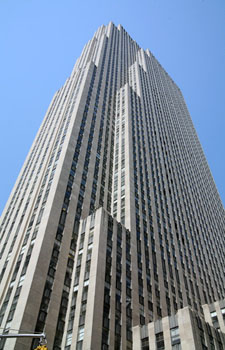Product Description
Louis W. Rice / Apollo Studios “Skyscraper” American Art Deco hand mirror 1928


LOUIS W. RICE (Designer) USA
APOLLO STUDIOS, BERNARD RICE’S SONS, INC. New York
Skyscraper vanity hand mirror 1928
Silver-plated brass, original beveled mirror
Stamped marks: APOLLO STUDIOS, NEW YORK EPNS within a rectangle, SKYSCRAPER, REG. U.S. PAT. OFF.
For related Skyscraper objects see: (cocktail shaker) Silver in America, 1840-1940: A Century of Splendor, Charles L. Venable (Dallas/New York: Dallas Museum of Art, Harry N. Abrams, Inc., 1995) p. 288; (teapot) Modernism: Modernist Design 1880-1940, The Norwest Collection, Norwest Corporation, Minneapolis, Alastair Duncan (Woodbridge, Suffolk, England: The Antique Collector’s Club, 1998); (cocktail shaker) American Modern 1925-1940, Design for a New Age, J. Stewart Johnson, exh. cat. Metropolitan Museum of Art (New York: Harry N. Abrams, American Federation of Arts, 2000) p. 48.
L: 18 1/2″ x D: 5″
The same model can be found in the collection of the New York Historical Society.
Louis W. Rice / Apollo Studios “Skyscraper” American Art Deco hand mirror 1928
OTTO ECKMANN attr. (1865-1902) Germany
Pair of candlesticks c. 1900
Hand-wrought iron with floral and foliage design
H: 12 ¼” x W: 8 ¼”
Price: $7,475
Otto Eckmann (19 November 1865 – 11 June 1902) was a German painter and graphic artist. He was a prominent member of the “floral” branch of Jugendstil. Otto Eckmann was born in Hamburg, Germany in 1865. He studied at the Kunstgewerbeschule in Hamburg and Nuernberg and at the academy in Munich. In 1894, Eckmann gave up painting (and auctioned off his works) in order to concentrate on applied design. He began producing graphic work for the magazines Pan in 1895 and Jugend in 1896. He also designed book covers for the publishers Cotta, Diederichs, Scherl and Seemann, as well as the logo for the publishing house S. Fischer Verlag. In 1897 he taught ornamental painting at the Unterrichtsanstalt des Königlichen Kunstgewerbemuseums in Berlin. In 1899, he designed the logo for the magazine Die Woche. From 1900 to 1902, Eckmann did graphic work for the Allgemeine Elektrizitätsgesellschaft (AEG). During this time, he designed the fonts Eckmann (in 1900) and Fette Eckmann (in 1902), probably the most common Jugendstil fonts still in use today.
ROSE CABAT (1914-2015) USA
“Feelie” c. 1980-85
Thin walled porcelain vessel with a silky satiny matte drip glaze
Signed: incised CABAT on bottom
For more information on Rose Cabat see: Rose Erni Cabat Retrospective 1936-1986 (Tuscon, AZ: Tuscon Museum of Art, 1986)
H: 4 3/4″
Price: $2,500
Rose Cabat is an American studio ceramicist living in Tucson. Considered one of the most important ceramic artists of the Mid-century Modernist movement, Cabat is best known for her innovative glazes on small porcelain pots called “feelies” which she developed in the 1960s. Her organic forms often resemble the shape of onions and figs, and her glazes range from organic to jewel tones. Cabat was born in 1914 in the Bronx, New York, began to work in ceramics in the late 1930′s, and moved to Arizona in 1942, where she continued to make innovative ceramics.
Feelies:
Feelies are described as onion, fig, cucumber, and saucer-shaped ceramic vases terminating in an upward closed neck. Bruce Block, an avid collector, has described them as sensual and tactile with a very specific unforgettable texture, spiritual seeming to contain a type of energy. Rose Cabat had developed a silky satiny glaze, and it wasn’t until around 1960 that she had hit upon the first of the appropriate form, svelte and sleek to match the glaze. She exclaimed, “Now this one’s a feelie.”, coining the term. Upon developing the new glazes, she felt that she needed new forms to apply the glazes to, different from what she made before, “craft fair” style coiled heads and wind bells. She is quoted as saying, “The old things did not look good … I wanted simpler shapes that went with the glazes.”They are typically globular in shape, tightening down to a minuscule neck glazed to a satin surface. The tactile experience is most important. The nature of the neck is such that it is closed, so narrow that it cannot hold anything. Cabat would reply when asked why the necks of her feelies are so narrow, “A vase can hold weeds or flowers, but can’t it just be a spot of beauty?”
